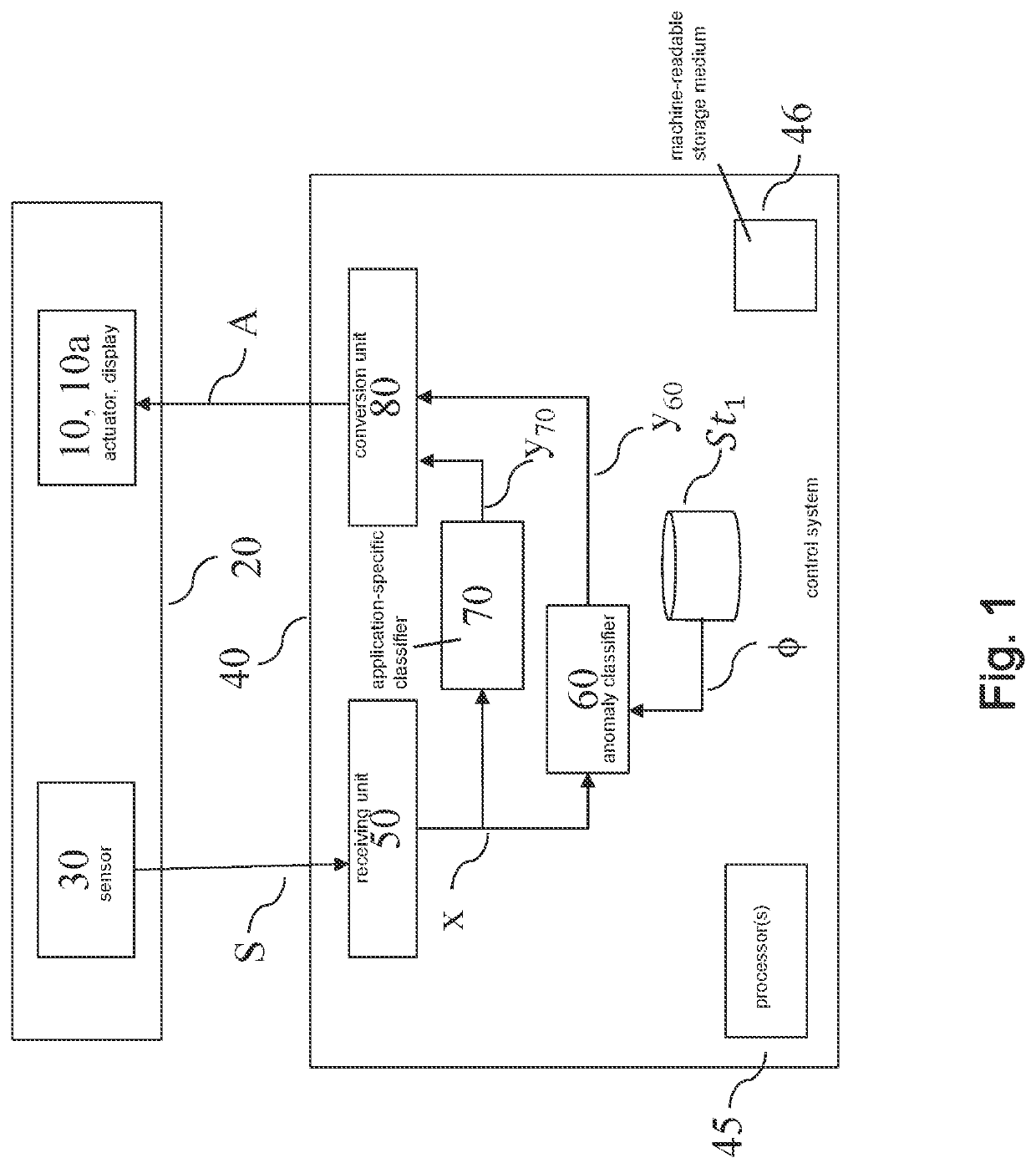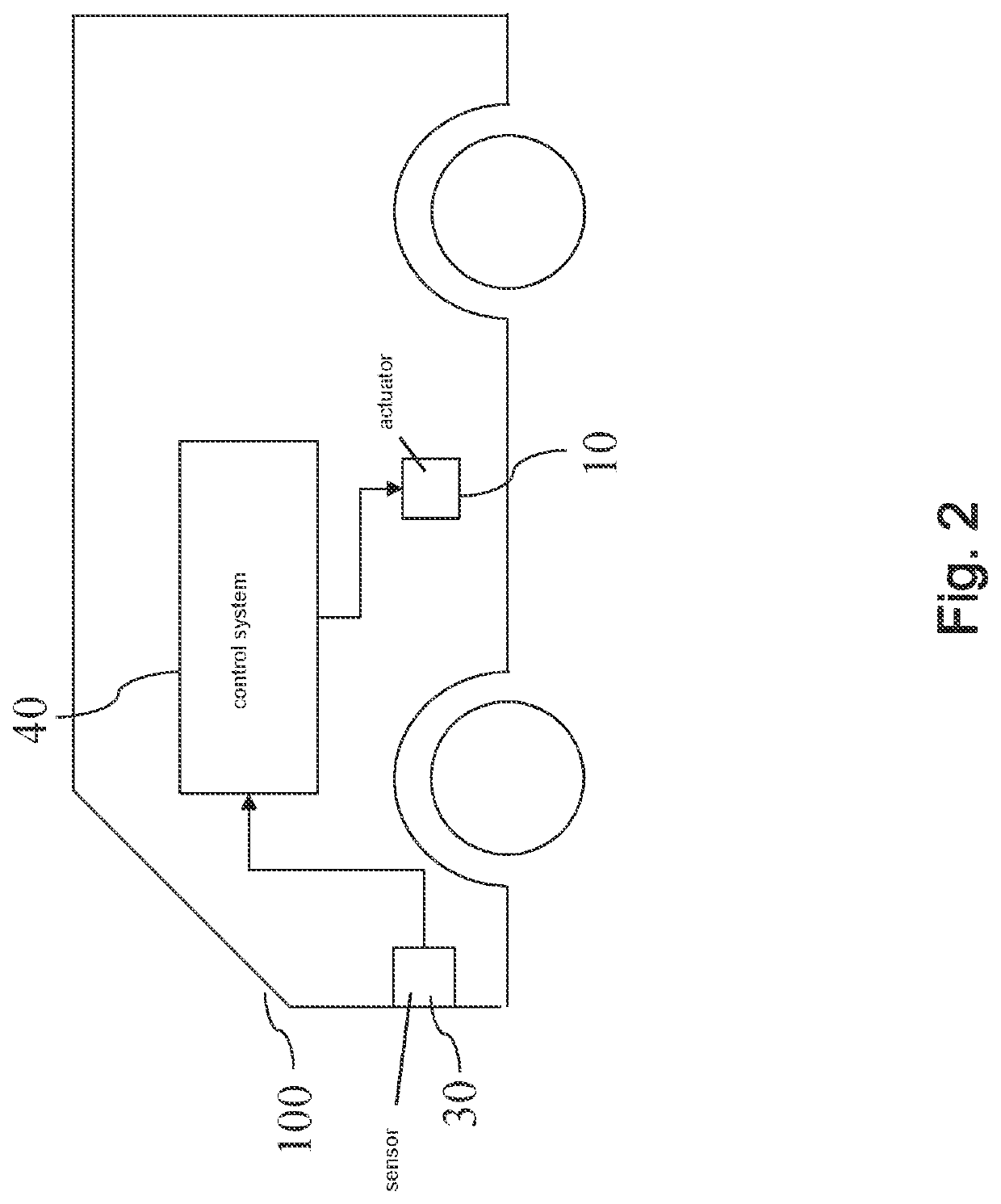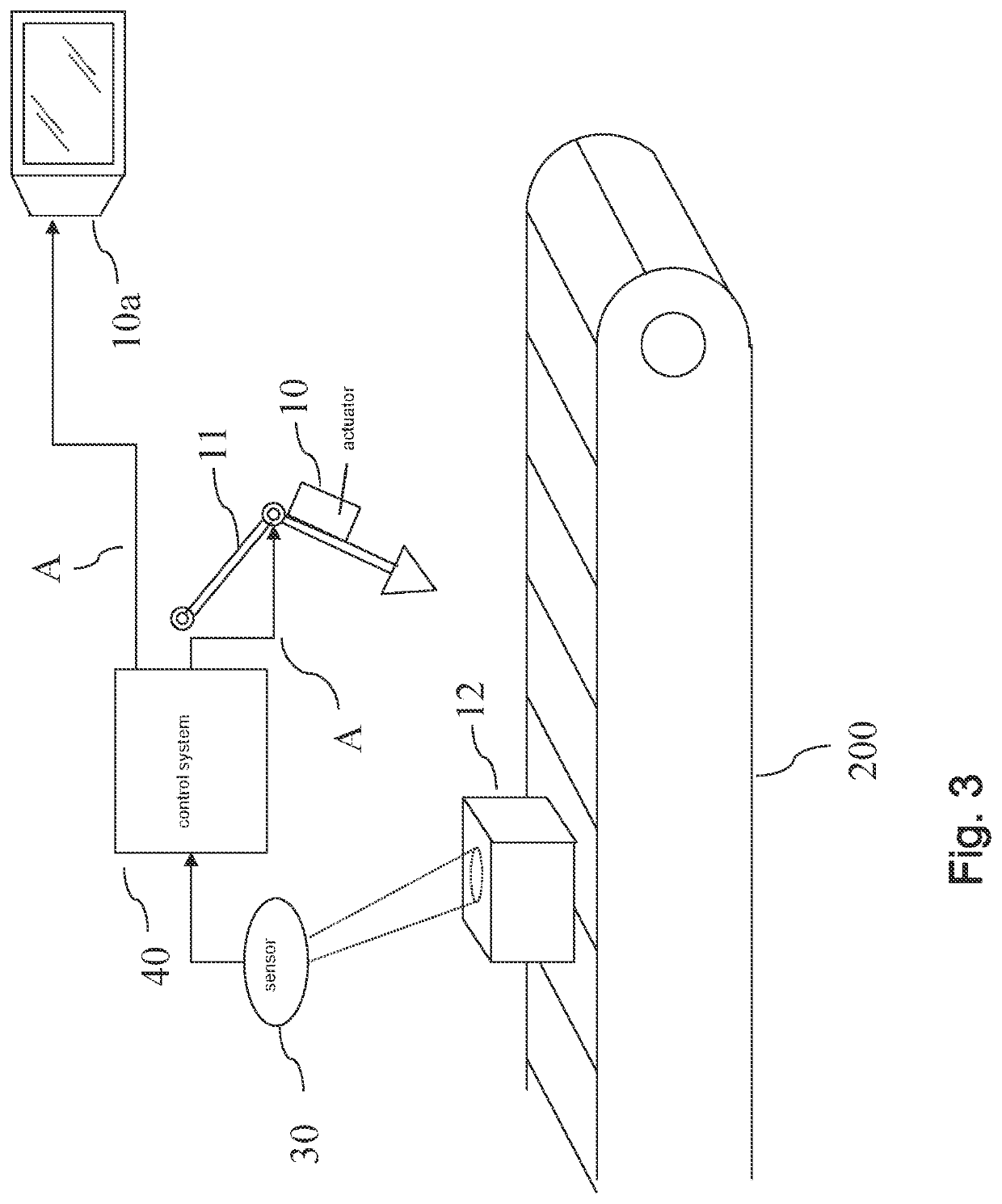Device and method for anomaly detection
a technology for anomalous data and devices, applied in adaptive control, process and machine control, instruments, etc., can solve problems such as difficult to obtain information on the characteristics of a data distribution, inability to perform acceptablely when presented with night-time images, and misclassification of anomalous data that may have a severe impact on obtaining collision-free trajectory, so as to reduce the wear on system parts, reduce false positives, and increase the performance of anomalous classifiers
- Summary
- Abstract
- Description
- Claims
- Application Information
AI Technical Summary
Benefits of technology
Problems solved by technology
Method used
Image
Examples
Embodiment Construction
[0085]Shown in FIG. 1 is an embodiment of an actuator (10) in its environment (20). The actuator (10) interacts with a control system (40). An actuator (10) may be a technical system that is capable of receiving actuator control commands (A) and of acting in accordance with said received actuator control commands (A). The actuator (10) and its environment (20) will be jointly called actuator system. At preferably evenly spaced points in time, a sensor (30) senses a condition of the actuator system. The sensor (30) may comprise several sensors. Preferably, the sensor (30) is an optical sensor that takes images of the environment (20). An output signal (S) of the sensor (30) (or, in case the sensor (30) comprises a plurality of sensors, an output signal (S) for each of the sensors) which encodes the sensed condition is transmitted to the control system (40).
[0086]Thereby, the control system (40) receives a stream of sensor signals (S). It then computes a series of actuator control com...
PUM
 Login to View More
Login to View More Abstract
Description
Claims
Application Information
 Login to View More
Login to View More - R&D
- Intellectual Property
- Life Sciences
- Materials
- Tech Scout
- Unparalleled Data Quality
- Higher Quality Content
- 60% Fewer Hallucinations
Browse by: Latest US Patents, China's latest patents, Technical Efficacy Thesaurus, Application Domain, Technology Topic, Popular Technical Reports.
© 2025 PatSnap. All rights reserved.Legal|Privacy policy|Modern Slavery Act Transparency Statement|Sitemap|About US| Contact US: help@patsnap.com



